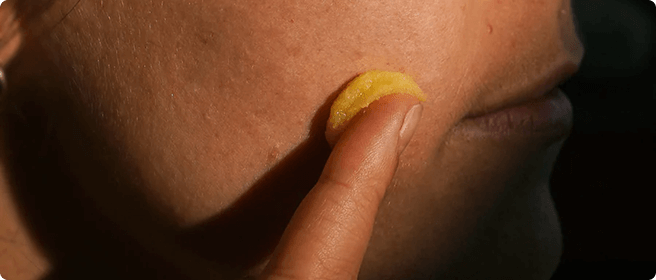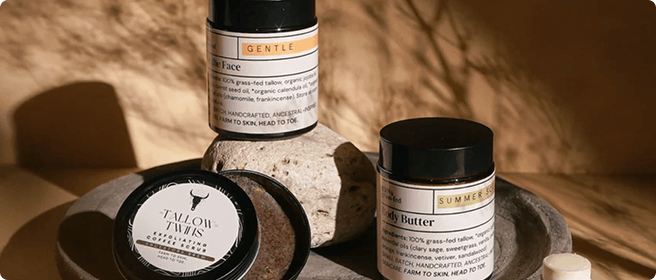As summer comes to a close, we find ourselves reflecting on how deeply we rely on (and need) the sun. This summer was a good one for us. We were busy, but we also soaked up moments of nature with loved ones as much as we could. We also embraced SUNLIGHT. We talk about the (proven) benefits of the sun alot, yet, for most people, their relationship with sunlight is complicated. We are trained to fear it. The cultural narrative tells us to hide beneath sunscreen, stay in the shade, and avoid direct exposure as if the sun were nothing more than a threat.
This idea stands in stark contrast to both human history and modern science. For centuries, sunlight was considered medicine. Physicians prescribed it for conditions ranging from tuberculosis to rickets. Ancient civilizations worshipped the sun as a god because they understood its central role in health and survival. Now, esearchers are once again uncovering what our ancestors knew: the sun is not optional. It is essential. Also, from a vanity standpoint, it makes you hotter.
So why are we told to fear the very force that sustains us? What happens to our bodies when we avoid natural light? And how do we begin to repair our relationship with the sun?
Part I: The Science of Sunlight
More Than Warmth on the Skin
Sunlight is more than the sensation of heat. It is a spectrum of electromagnetic radiation, including ultraviolet, visible light, and infrared, each of which interacts with our biology in profound ways.
The most familiar benefit of sunlight is vitamin D production. When ultraviolet B rays reach the skin, they convert cholesterol into vitamin D3. This vitamin functions more like a hormone than a simple nutrient, influencing bone density, immunity, and hormonal balance. Low levels of vitamin D are associated with osteoporosis, autoimmune disease, and even mood disorders like depression Harvard Health.
Sunlight also stimulates the release of nitric oxide, a molecule that relaxes blood vessels and lowers blood pressure NIH. Daytime light exposure elevates serotonin, the neurotransmitter associated with happiness and clarity. At night, the absence of light allows the pineal gland to release melatonin, which drives deep and restorative sleep.
Infrared light, another component of sunlight, penetrates deeply into tissue and stimulates mitochondria to produce energy more efficiently. This is the same principle that has made red light therapy so popular in wellness spaces today. Yet nature offers it daily, without cost.
Circadian Rhythms and the Body’s Clock
Perhaps the most profound role of sunlight is in the regulation of circadian rhythm, the internal clock that governs nearly every aspect of health. Morning light signals cortisol release, balances energy, and sets the stage for restful sleep later in the day. Without these cues, the body quickly drifts out of rhythm. Fatigue, insomnia, and metabolic dysfunction often follow Sleep Foundation.
Part II: The History of Sunlight as Medicine
Ancient Reverence
Humanity’s respect for the sun is as old as civilization itself. Egyptians designed temples aligned with solar patterns. Greeks recommended heliotherapy for skin diseases. Romans constructed open courtyards in their bathhouses where people could bask in the light. Hippocrates, remembered as the father of medicine, described the healing power of air and sunlight as central to recovery.
Heliotherapy in Modern Medicine
By the late nineteenth and early twentieth centuries, sunlight was a common prescription. Tuberculosis sanatoriums featured large balconies and rooftop terraces so that patients could lie outside for hours. Physicians believed that sunlight could slow the disease’s progression.
One of the leading figures of this era was Dr. Auguste Rollier, a Swiss physician who used high-altitude heliotherapy as a treatment for tuberculosis. Photographs of his patients show rows of people reclining outdoors in the snow, bundled in blankets but exposing their skin to the healing rays.
At the same time, rickets had become widespread among children in smog-filled cities. Doctors recognized that sunlight could prevent and even cure the disease. Public health campaigns encouraged parents to ensure their children spent time outside. Sunlight was understood to be as vital as food and water National Library of Medicine.
Part III: How We Learned to Fear the Sun
If sunlight was once so valued, why is it now treated with suspicion?
The Shift in the Twentieth Century
As life expectancy increased, so did the number of skin cancer diagnoses. Public health campaigns began to frame sunlight not as a healer but as a hazard.
By the mid-twentieth century, sunscreen use was widespread. Early versions contained zinc oxide, while later iterations relied on chemical filters. The message was consistent and absolute: avoid the sun to prevent aging and disease.
The Dermatology Narrative
The growing field of dermatology embraced this story. Wrinkles, age spots, and cancers were all attributed to ultraviolet radiation. Instead of encouraging balance, the advice was to avoid direct exposure altogether. The difference between sunburn and healthy sunlight was blurred in public messaging.
Indoor Lifestyles
The industrial and digital revolutions reinforced this narrative. People began spending most of their lives indoors under artificial light. The less exposure people had, the less resilient their skin became. As a result, even small amounts of sunlight could cause burns. This cycle fed the belief that the sun was inherently unsafe.
Part IV: What We Lose Without the Sun
The widespread avoidance of sunlight has had measurable consequences.
Vitamin D Deficiency
Vitamin D deficiency has become one of the most common nutrient gaps globally. Low levels contribute to osteoporosis, weakened immunity, cardiovascular disease, and higher susceptibility to infections Cleveland Clinic. Supplements are helpful but cannot replicate the full benefits of natural sunlight.
Autoimmune and Inflammatory Disorders
Sunlight influences immune balance in ways that researchers are still uncovering. Regular exposure is linked to reduced risk of multiple sclerosis, type 1 diabetes, and inflammatory bowel disease NIH. Avoidance may contribute to the rise of autoimmune conditions seen today.
Mental Health
The connection between light and mood is undeniable. Seasonal affective disorder, depression, and anxiety worsen in low-light environments. Exposure to natural sunlight boosts serotonin and endorphins, creating effects similar to antidepressants Harvard Gazette.
Sleep and Metabolism
Without morning sunlight, circadian rhythms fall out of sync. Sleep becomes lighter and less restorative, which in turn affects insulin and other metabolic hormones. Disrupted sleep is strongly linked to weight gain and chronic disease NIH.
Part V: The Balanced Truth
Sunlight can cause harm when misused, but the fear-based narrative ignores context.
The Difference Between Burning and Healthy Exposure
There is a vast difference between burning and safe exposure. Historically, humans spent most of their time outdoors, and their skin developed resilience. Modern habits often involve long months indoors, followed by a sudden day in the sun. The result is burning, which is not the same as consistent, moderate exposure.
Skin Types and Geography
Skin type and geographic location influence how much sun is healthy. Darker skin requires more exposure to produce vitamin D, while lighter skin requires less. In northern latitudes, people must take advantage of summer sunlight, while those closer to the equator should pace their exposure.
Nutrition and Skin Resilience
Diet significantly influences how skin responds to sunlight. Diets high in processed seed oils increase susceptibility to burning, while nutrient-rich foods provide resilience. Traditional fats such as tallow are full of fat-soluble vitamins that support skin health. They offer protection from within, while topical tallow supports the skin externally without blocking interaction with the sun.
Part VI: Reclaiming Our Relationship with the Sun
So how do we rebuild a healthy relationship with sunlight?
Morning Light as a Daily Ritual
Spend time outdoors within an hour of waking. Morning light anchors the circadian rhythm, balances cortisol, and prepares the body for restful sleep at night. Even ten minutes can make a measurable difference.
Midday Sun for Vitamin D
Short, safe periods of midday exposure are the most effective for producing vitamin D. Build tolerance gradually and avoid burning.
Supporting Sun Exposure with Diet and Skincare
Nutrient-dense foods support the body’s natural resilience to sunlight. Diets rich in animal fats, antioxidants, and minerals protect the skin and reduce inflammation. Using tallow-based skincare provides topical nourishment that supports rather than blocks the skin’s relationship with light.
Returning to Ancestral Wisdom
Reconnecting with sunlight is not about rejecting modern science but about remembering ancient wisdom. For most of history, humans lived outdoors in harmony with the cycles of light and dark. Returning to that balance is not a step backward. It is progress toward true wellness.
The sun is not a threat to avoid. It is the source of life, a natural medicine, and one of the most profound healers available to us. Our fear of it stems from decades of misunderstanding and cultural drift away from nature.
Reclaiming the sun means reclaiming vitality. It restores circadian rhythm, strengthens immunity, lifts mood, and reconnects us to the rhythms that shaped human life. As summer fades, let us carry forward the lesson that sunlight is not something to hide from but something to honour. The sun is not danger. The sun is life itself.
Support Your Skin
True sun care is not about blocking the sun. It is about nourishing your skin so it can thrive in partnership with it. Our Pre & Post Sun Care Collection is made with grass-fed tallow and skin-loving botanicals, rich in vitamins A, D, E, and K. These nutrients strengthen the skin barrier, calm inflammation, and support recovery after time in the sun.
Shop the Pre & Post Sun Care collection here.






